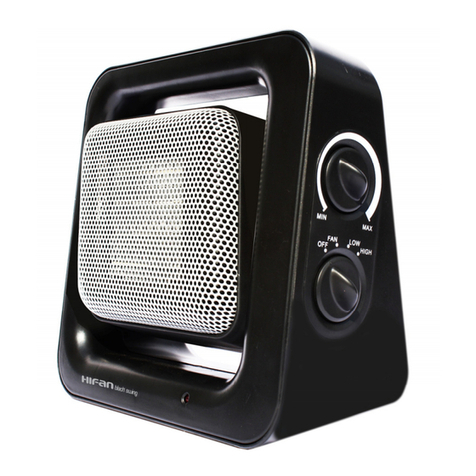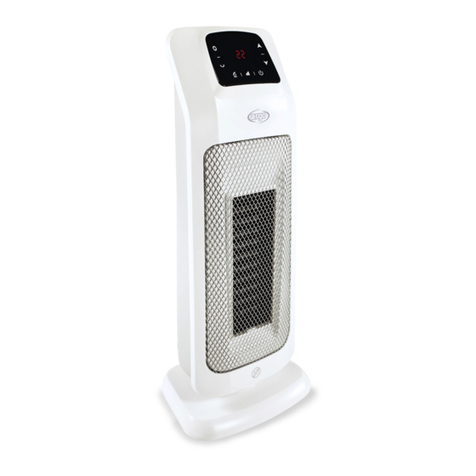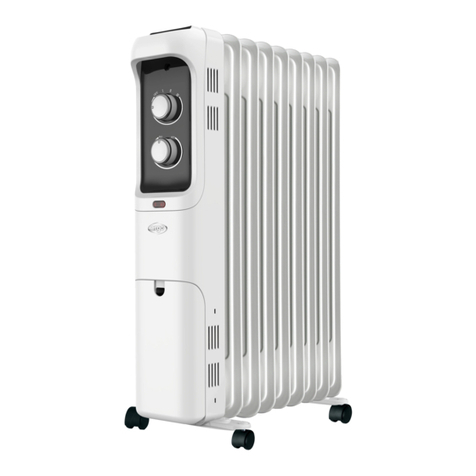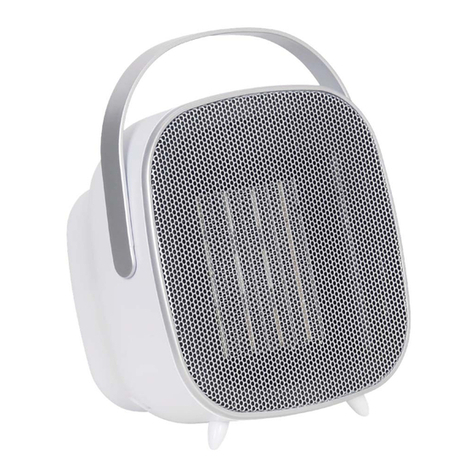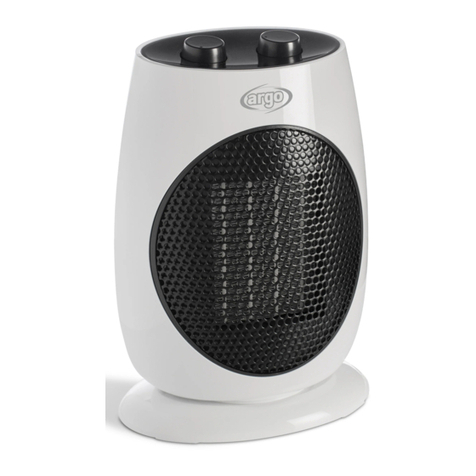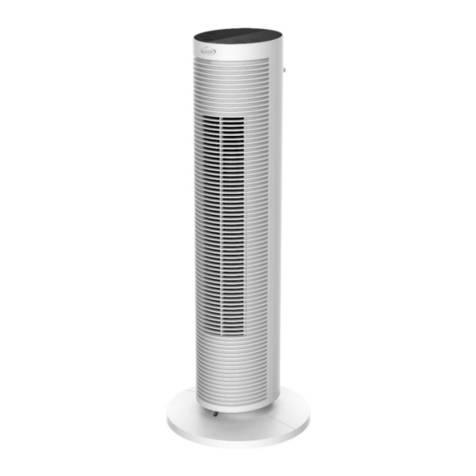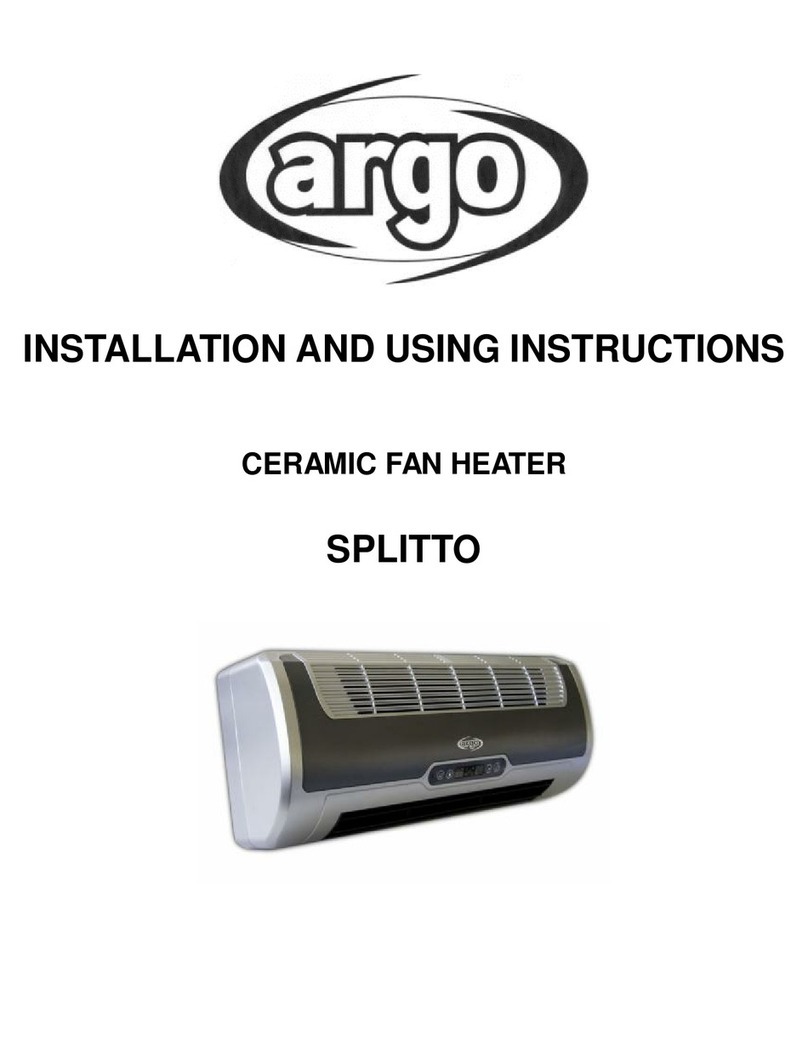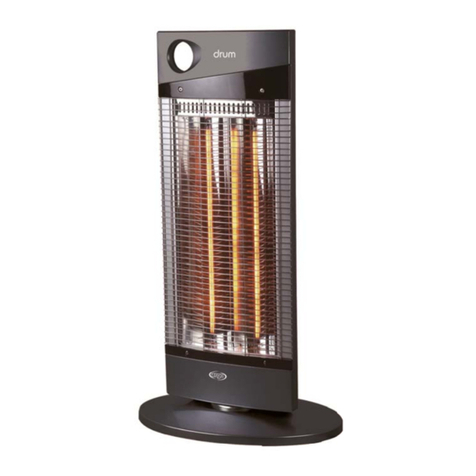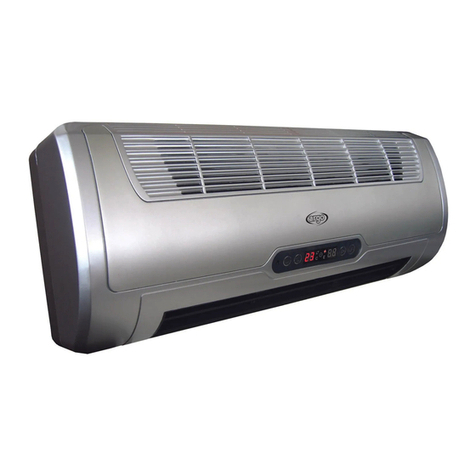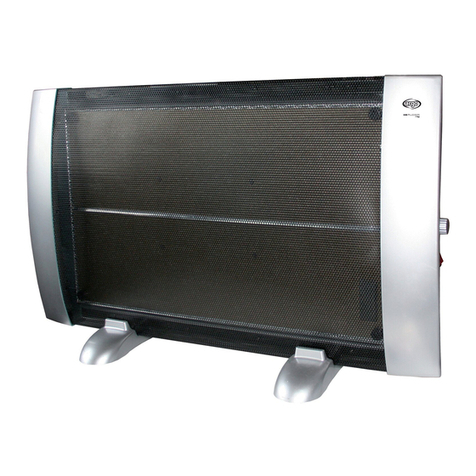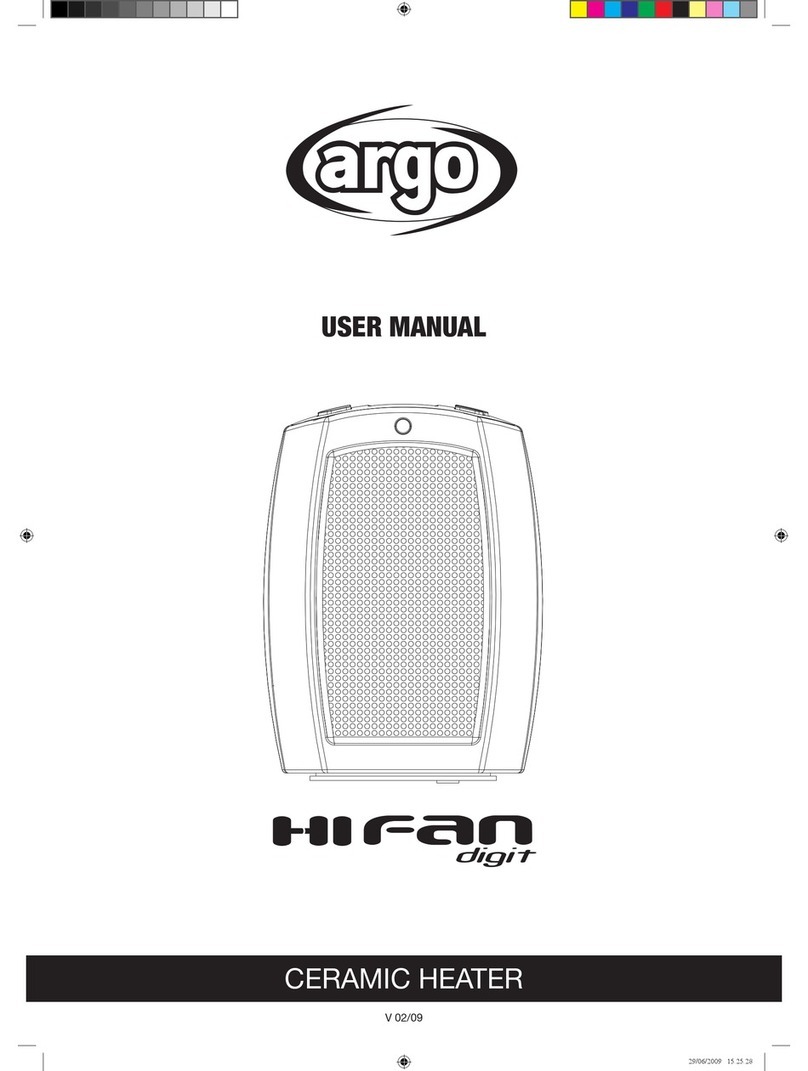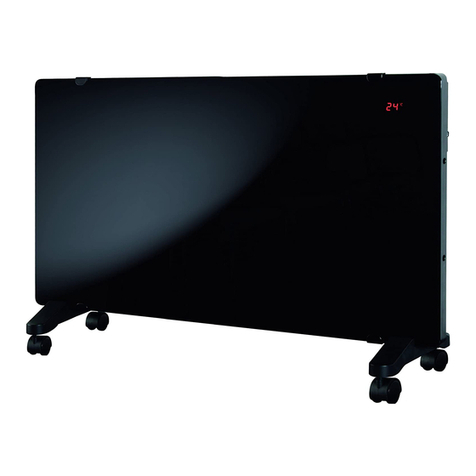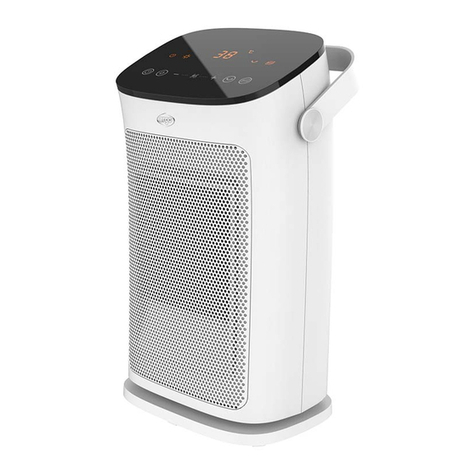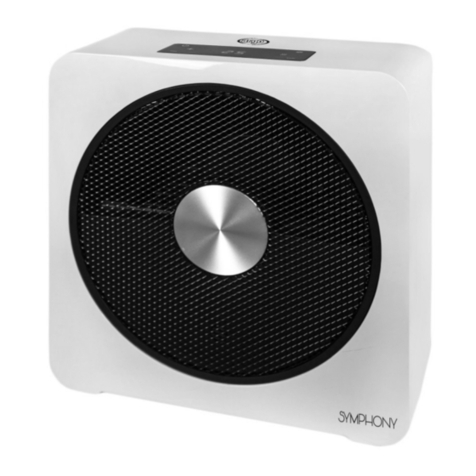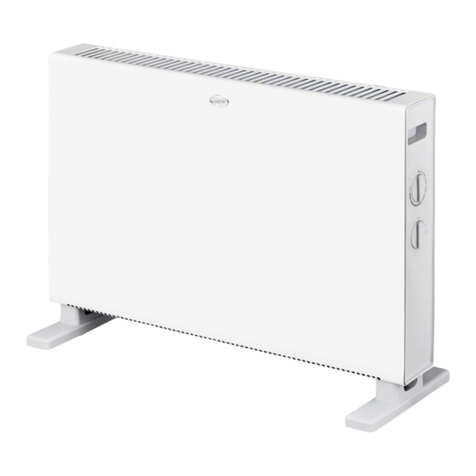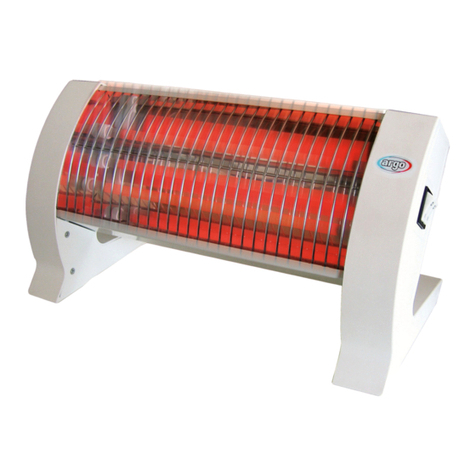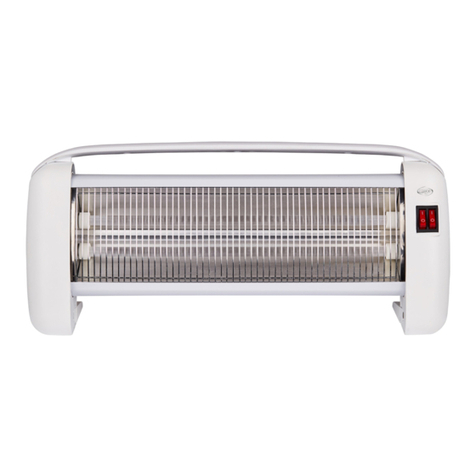
IMPOSTAZIONE DEL TIMER SETTIMANALE (solo da telecomando)
Dopo aver impostato l’orario e il giorno della settimana premere P per accedere all’impostazione del timer settimanale,
1. Premere DAY per impostare il giorno di accensione (d1, d2, d3,…),
2. Premere EDIT per impostare i periodi di funzionamento del termoventilatore (P1, P2,… P6)
3. Premere TIME/ON per impostare l’orario di accensione (00-24)
4. Premere TIME/OFF per impostare l’orario di spegnimento (00-24)
5. Premere i pulsanti + o – per impostare la temperatura desiderata
6. Premere OK per confermare le impostazioni
Per impostare gli eventialu successivi periodi di funzionamento, (max 6) ripetere il procedimento dal punto 2 al punto 6.
Ripetere il procedimento dal punto 1 per impostare gli altri giorni della settimana.
Dopo aver completato il procedimento di impostazione del timer settimanale, premere i pulsanti DAY EDIT TIME/ON e
TIME/OFF per controllare le impostazioni per ogni giorno.
Tutte le impostazioni si cancellano quando il termoventilatore viene spento con il pulsante
IMPOSTAZIONE DELLA FUNZIONE “FINESTRA APERTA”
Quando l’unità è in funzionamento premere il pulsante sul telecomando per attivare la funzione finestra aperta, sul
display appare il LED come mostrato in figura: Premere i pulsanti + o – per impostare la
temperatura. Quando questa funzione è attiva se la temperatura ambiente scende di 5-10°C in meno di 10 minuti, il
termoventilatore smette di funzionare entrando in modalità stand-by. Premere per riavviare l’unità.
Se si impostano entrambe le funzioni di timer settimanale e finestra aperta e, in base alla programmazione settimanale,
l’unità è spenta, anche la funzione finestra aperta non è attiva. Quando invece, in base alla programmazione settimanale,
l’unità è funzionante, la funzione finestra aperta può controllare spegnimento e riaccensione della stessa.
DISPOSITIVO DI SICUREZZA CONTRO IL SURRISCALDAMENTO
In caso di surriscaldamento il sistema di protezione dell’apparecchio disattiva automaticamente gli elementi riscaldanti ed il
motore, facendo così interrompere il funzionamento del termoventilatore.
In questo caso:
•spegnere il termoventilatore;
•rimuovere le cause di surriscaldamento (per es. ostacoli di fronte alla griglia di ingresso e/o uscita dell’aria, anomalo
accumulo di polvere dentro l’apparecchio, ecc);
•lasciar raffreddare la stufa per 15/20 minuti;
•accendere nuovamente il termoventilatore e verificarne il corretto funzionamento.
Se il malfunzionamento dovesse persistere, rivolgersi ad un Centro Assistenza Autorizzato.
MANUTENZIONE E STOCCAGGIO
ATTENZIONE: ESTRARRE SEMPRE LA SPINA PRIMA DI PULIRE L’APPARECCHIO O FARE MANUTENZIONE.
IMPORTANTE: NON IMMERGERE IL TERMOVENTILATORE IN ACQUA.
Pulizia della superficie esterna dell'apparecchio
Spegnere il termoventilatore e rimuovere la spina prima di fare pulizia o muovere l’apparecchio.
Usare un panno morbido per rimuovere la polvere dal prodotto.
Se questo non basta, usare un panno morbido inumidito con acqua e detergente neutro a temperatura inferiore a 50°C.
Lasciare asciugare completamente l’apparecchio prima di utilizzarlo.
Non applicare detergenti corrosivi o solventi quali benzina. Non lavare l'apparecchio con acqua. Durante la pulizia non
usare oli, sostanze chimiche o altri oggetti che possano danneggiare la superficie.
Utilizzare un aspirapolvere per rimuovere la polvere dalle griglie di entrata e uscita dell’aria.
STOCCAGGIO
Nei periodi di non utilizzo, conservare l’apparecchio insieme a questo manuale nella scatola originale in luogo
fresco e asciutto.



















